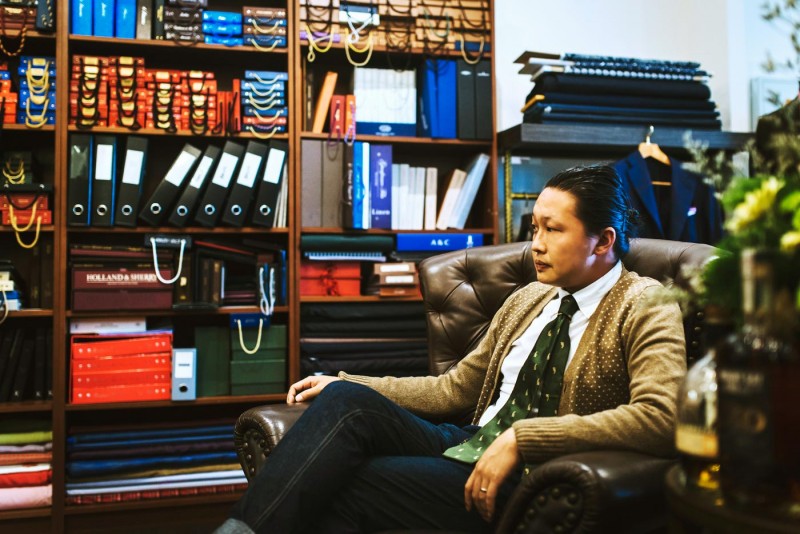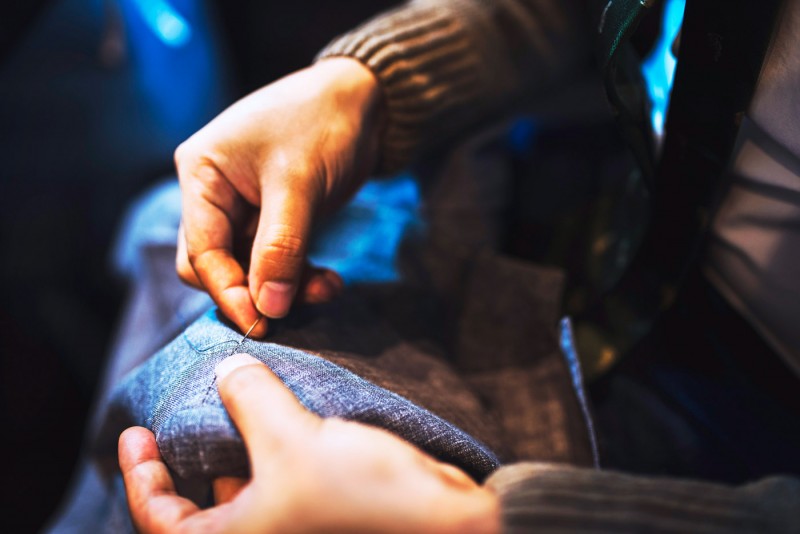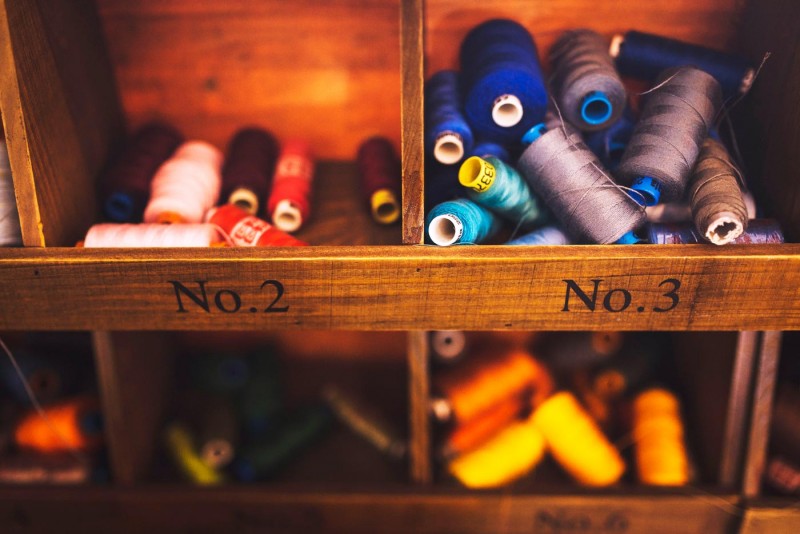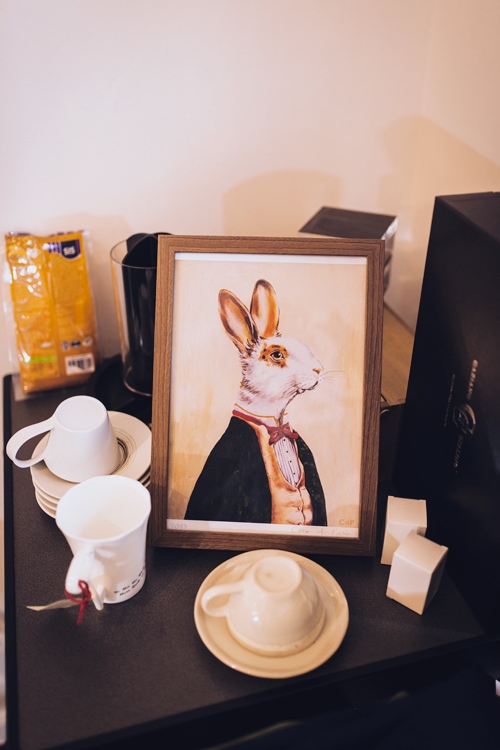Kevin Seah: A True Craftsman
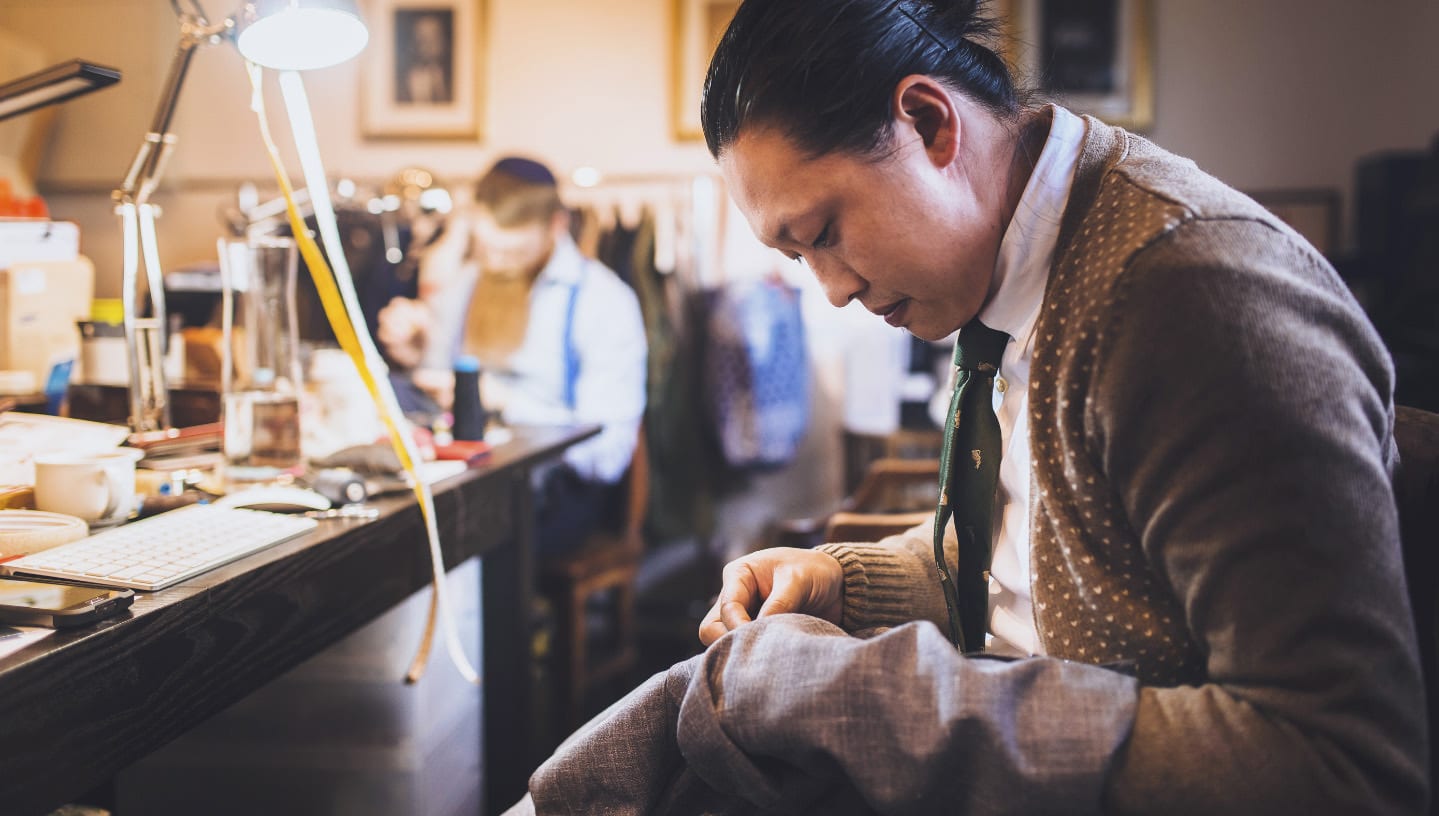
I show up at 55 Boat Quay only to see a rare sight – a bespectacled and bearded Orthodox Rabbi dressed in dapper garb (light pink shirt and suspenders)? Scott Schuman will be dying to take a photo of him. I approach knowingly that he must be one of them. “Are you looking for Kevin?” he asks. I reply with the usual formalities and Yosel leads the way.
Upstairs, Kevin Seah’s bespoke boutique is a juxtaposition of a British gentleman’s club and an atelier. Everything is laid out nicely and at one glance, you know that you are in the right hands – impeccable style from head to toe is certainly guaranteed. Oh and did I mention that there is a shoe shine bar too?
Before I could even warm the dark brown leather armchair, Kevin Seah introduces himself and a firm handshake later, we adjourn to a private room – or for a more cosy term, the attic. As someone who designs customised and well-tailored suits for men, dressing well is de rigueur. His attire comprises a crisp white shirt with a camel cardigan, raw denim and a royal green tie with monogram prints of his signature rabbit logo as a statement piece. This effortlessly stylish, yet unpretentious look solidifies Kevin’s understanding of fashion and transcends the superficiality of “getting as many likes on instagram with my #OOTD” that many fame hungry wannabes or bloggers try to portray.
Kevin’s story is somewhat unconventional: when he was 17, he started out as an apprentice for a seamstress doing women’s tailoring and with 23 years of experience under his belt, he has mastered the craft of bespoke tailoring without any formal Fashion Design education.
WY-LENE YAP: What is fashion to you?
KEVIN SEAH: Fashion is an expression of who you are. There is really no right or wrong. Depending on how you feel today, you can wear a pair of jeans with a Chanel jacket, or a La Perla corset (underneath) and a feather necklace.
WY-LENE: What inspires you?
KEVIN: Everything around me inspires me – even just talking to someone. I don’t follow trends. It’s more my mental state of mind.
WY-LENE: And what is your mental state of mind?
KEVIN: The beauty of us is that if today, I decide to make a pair of Egyptian cotton boxer shorts, I can do it immediately. With a big fashion company, it will take months.
WY-LENE: Yeah, because you have buyers, a certain clientele and overall direction that you need to cater to.
KEVIN: Exactly, we know how it works. The process is way too long.
WY-LENE: Describe your style.
KEVIN: My style is a combination between knowledge, which I have accumulated over the years, and things that I like: music, photography, art and textiles. It’s so heavily embedded in me that sometimes, I tend to revisit and re-cultivate the moment: for example, why do I feel so strongly about tweed this week? So that period I can be very tweed-focused.
WY-LENE: Your focus seems to be predominantly on menswear – do you still do womenswear?
KEVIN: No. I started doing haute couture actually, but I realised that I don’t have the right audience. I wanted to do what a real haute couturist does – construct everything by hand, but the environment makes it so difficult.
WY-LENE: What are the differences between menswear and womenswear?
KEVIN: It’s the same – you just work around a body. It’s the personality that makes the difference.
WY-LENE: How about menswear trends at the moment?
KEVIN: A blue blazer, white button-down shirt and coloured chinos. I think it is good that men are more exposed to Tumblr, Pitti Uomo, etc to find inspiration. If you are in a blue blazer, there is an eighty percent chance that you will be photographed at Pitti Uomo. But to me, it’s stale. Blue blazers are mainstream. On the other hand, you have another group who are edgy that like to wear skinny pants with a skirt and a leather jacket thrown over the shoulder – that’s not what I want in menswear – it doesn’t excite me. What excites me is somebody like Yohji Yamamoto, who can cut a collar and a sleeve in the most revolutionary way.
WY-LENE: So you look up to Yohji Yamamoto and aspire to be like him?
KEVIN: Yohji has always been a very influential designer in my life. Having said that, I also like Alexander Mcqueen because we have many similarities: our background in tailoring, interests in masculine styles that juxtapose the hard and the soft, and the use of certain fabrics like wool.
WY-LENE: How about Raf Simons or Dries Van Noten?
KEVIN: I appreciate what Raf Simons has been doing for the past few years, and I actually bought a few pieces from his very first collection. I was probably twenty at that time. I realised that his look was essential during that era, but not in today’s context. I understand his style and respect him as a designer because he was one of the first to do androgynous menswear.
WY-LENE: As a customer, what can one expect from your bespoke tailoring?
KEVIN: Apart from our personalised service, we educate them on the various types of fabrics. A lot of customers have a misconception that wool makes them “hot”.
WY-LENE: How much does a Kevin Seah suit cost?
KEVIN: Made-to-measure is $1,600 and bespoke is $4,000 onwards because of the level of customisation.
WY-LENE: Most expensive suit that you have made?
KEVIN: It hasn’t hit its peak yet. [laughs] $15,000 – because we used an expensive cloth.
WY-LENE: How long does it take to make one?
KEVIN: Seventy to eighty hours for a bespoke suit.
WY-LENE: What are some of your favourite fabrics that you like to work with?
KEVIN: Tweed, denim and handwoven fabrics. In fact, my next stage is to go to a remote village and try to create a small workshop to weave our own cloth.
WY-LENE: Where do you source your fabrics?
KEVIN: All over the world: England, Italy, Japan (for denim) and Scotland (for tweed). Recently, we have a small range of handwoven fabrics from Chiangmai, which is relatively untapped and unheard of. I want to show the world that a Singaporean tailor is just as capable or even better than an Italian tailor or a Savile Row tailor. We are not your Chinatown or Far East Plaza tailors that can can make a $500 suit in 24 hours. It takes years to educate people and when I first started doing menswear (6 years ago), I felt very alone.
WY-LENE: Why did you feel that way?
KEVIN: There is a lack of appreciation for my craft. Everyone is so brand conscious here and they need to wear designer labels to justify their status.
WY-LENE: Do women approach you to make suits?
KEVIN: Very few. Most women don’t know what tailoring is – in a year, I get less than five female customers. Singaporean women want quantity not quality.
WY-LENE: Understanding the importance of fit and how it is being made is so crucial.
KEVIN: There is a four-month waiting list for my bespoke suits and four to six weeks for the made-to-measure ones.
WY-LENE: What are some of the quintessential fashion items that a man should own?
KEVIN: A well-tailored jacket and shirt, ties and a nice pair of dress shoes.
WY-LENE: Are you referring to wingtips?
KEVIN: If you talk about shoes, there are 5 things every man should have to complete his wardrobe: loafers, oxfords, whole-cut, suede chukka boots and Chelsea boots. A man can never have too many pairs of shoes as they can bring him places [laughs].
WY-LENE: As a local designer, do you feel that it is hard to gain recognition?
KEVIN: Yes, because the media keeps using the word “local”. One time, I blasted on my Facebook page to all my media friends to stop using the word “local”. To me, it is a second-class word. The choice of word does make a difference and I prefer to known as a Singaporean designer instead.
WY-LENE: Do you think that if you had made it big overseas first before coming back to Singapore, things will be different?
KEVIN: Of course, I tell everyone that. I was twenty-one when I went to London for the first time. The day before my flight, I wanted to throw my passport into the river. During that period, I was visiting and staying with Jo [Soh] from Hansel – she was a student at Saint Martins and she was helping this designer called Tristan Webber, who was touted as the next Alexander Mcqueen. I went to visit the studio while they were preparing for London Fashion Week and it was amazing as there was so much energy. He was working with sculpted leather and I knew I could never do that in Singapore.
WY-LENE: We have seen a lot of fashion collaborations of late. Have you done any?
KEVIN: Yeah, with Steve Lawler, an artist and personal friend of mine. We did a range of pocket squares with the background of old Singapore. I also collaborated with a French graffiti artist called Kongo to make a jacket and we exhibited it in Jakarta. I would love to work with Wedgwood to come out with a range of tableware and that’s something I would like to strike off my bucket list.
WY-LENE: What about business expansion plans?
KEVIN: We have started to do trunk shows outside of Singapore. In the next 2 years, I will be doing a lot of travelling to the New York, San Francisco, Paris, Seoul, etc. I think the Kevin Seah brand is more well-known overseas than in Singapore.
WY-LENE: That’s ironic.
KEVIN: Well, it’s a good thing. I can start from the outside and then come back in again. Singapore will always be my base.
